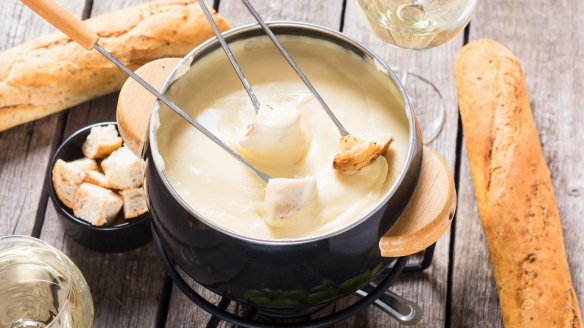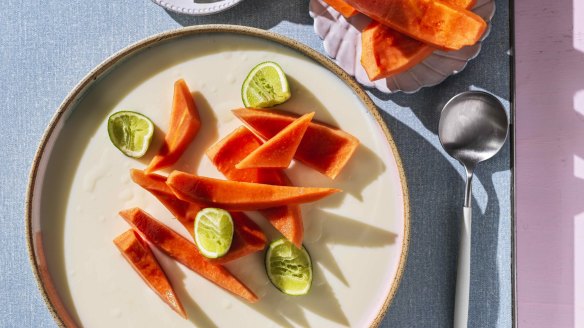The secret to making a perfectly smooth cheese fondue

I spent a lot of money on good cheese to make fondue, and it all clumped together before separating. Any advice for next time? K. Tengku
I love fondue. So does cheesemonger Anthony Femia, from Melbourne's Maker and Monger.
He says the best cheeses for a traditional fondue include Swiss gruyere for body, comte for sweetness, and something special from the Alps like a L'Etivaz or Challerhocker to add depth of flavour.
To ensure a nice, smooth fondue, the protein in the cheese needs to be treated gently. Thermal shocks can cause clumping. So bring your cheese to room temperature, grate it first, and make sure the pot you are using is heavy-based and the heat source low.
He warms dry white wine in the fondue pot, then adds the grated cheese one handful at a time – the acid in the wine helps stop the cheese proteins from separating and forming long strings.
The addition of cornflour in some recipes also helps prevent clumping. Don't boil the fondue or stir too vigorously and serve immediately in the pot set over a tiny flame.
Enjoy with a variety of foods to dip, including toasted bread cubes, steamed veg and freshly fried fat chips.

How do I use papaya? J. Hill
At the moment, the markets are full of papaya sourced from north Queensland, where we grow about 15,000 tonnes a year. Make the most of them because supply is about to slow down for winter.
It will then pick up again closer to the spring equinox in September. Papaya and paw paw are different varieties of the same tropical tree, Carica papaya.
(Not to be confused with the deciduous North American pawpaw, Asimina triloba, that produces fruit similar to soursop and custard apple.)
Papaya has red flesh and is smaller than pawpaw, which has yellow flesh.
Both have a beautiful sweet aroma when ripe but when over-ripe or under-ripe an enzyme in the seeds called papain can smell like smelly socks to some, but not all, people.
That same enzyme breaks down protein and can be used as a meat tenderiser. Papaya and pawpaw are interchangeable in recipes such as papaya and ginger jam, and barramundi and grilled papaya.
If you can get your hands on unripe papaya, it's worth making the fiery salad known in Thailand as som tum.
- How to make som tum: Peeling and grating the fruit, bruising it in a mortar and pestle with cherry tomatoes, snake beans, and dressing in a sauce made with lime juice, palm sugar, fish sauce, dried prawn, garlic, chilli and roasted peanuts.
Letters
Recently we talked about cooking with terracotta. This prompted S. Elks to write, "I used a Schlemmertopf clay cooking pot for several decades just for roasting chicken until the clay became translucent with chicken fat. Best roast chicken ever." These German-made partially glazed dishes look like a small clay bread bin and are making a comeback as they are economical, great for nose-to-tail slow-cooked dishes and have their own cool, retro appeal.
Send your culinary conundrums and ingredient suggestions to brainfood@richardcornish.com.au or Twitter and Insta @foodcornish
Appears in these collections
- More:
- Food
- Brain food
